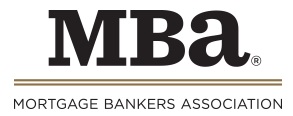DALLAS, TX – February 21, 2013 – (RealEstateRama) — The delinquency rate for mortgage loans on one-to-four-unit residential properties fell to a seasonally adjusted rate of 7.09 percent of all loans outstanding at the end of the fourth quarter of 2012, the lowest level since 2008, a decrease of 31 basis points from the previous quarter, and down 49 basis points from one year ago, according to the Mortgage Bankers Association’s (MBA) National Delinquency Survey, released today at MBA’s National Servicing Conference and Expo in Dallas, Texas.
While delinquency rates typically increase between the third and fourth quarters of the year, even the non-seasonally adjusted delinquency rate dropped 13 basis points to 7.51 percent this quarter from 7.64 percent last quarter.
The delinquency rate includes loans that are at least one payment past due but does not include loans in the process of foreclosure. The percentage of loans on which foreclosure actions were started during the fourth quarter was 0.70 percent, the lowest level since the second quarter of 2007, down 20 basis points from last quarter and down 29 basis points from one year ago. The percentage of loans in the foreclosure process at the end of the fourth quarter was 3.74 percent, the lowest level since the fourth quarter of 2008, down 33 basis points from the third quarter and 64 basis points lower than one year ago.
The serious delinquency rate, the percentage of loans 90 days or more past due or in the process of foreclosure, was 6.78 percent, a decrease of 25 basis points from last quarter, and a decrease of 95 basis points from the fourth quarter of 2011.
The combined percentage of loans at least one payment past due or in foreclosure was 11.25 percent on a non-seasonally adjusted basis, a 46 basis point decrease from last quarter and a 128 basis points decrease from the same quarter one year ago.
“We are seeing large improvements in mortgage performance nationally and in almost every state. The 30 day delinquency rate decreased 21 basis points to its lowest level since mid-2007. With fewer new delinquencies, the foreclosure start rate and foreclosure inventory rates continue to fall and are at their lowest levels since 2007 and 2008 respectively,” said Jay Brinkmann, MBA’s Chief Economist and Senior Vice President of Research.
“The foreclosure starts rate decreased by the largest amount ever in the MBA survey and now stands at half of its peak in 2009. Similarly, the 33 basis point drop in the foreclosure inventory rate is also the largest in the history of the survey. One cautionary note is that the 90+ delinquency rate increased by 8 basis points, reversing a fairly steady pattern of decline and the largest increase in this rate in three years. While we normally see an increase in this rate in individual states when they change their foreclosure laws, 38 states had increases in the percentage of loans three payments or more past due, indicating that we could see a modest increase in foreclosure starts in subsequent quarters.
“The two biggest factors impacting the number of loans in the foreclosure process still are the magnitude of the problem in Florida and the judicial foreclosure systems in some states. 12 percent of the mortgages in Florida are in the process of foreclosure, down from a peak of 14.5 percent last year but still an extraordinarily high rate that is impacting the national rate. In addition, while the percentages of loans in foreclosure dropped in almost all states, the average rate for judicial states was 6.2 percent, triple the average rate of 2.1 percent for nonjudicial states. In those cases, the ultimate reduction in the number of loans in foreclosure will have less to do with the recovery of the economy and the housing market than with the return to reasonable foreclosure timelines.
“The performance of FHA loans is mixed. While the foreclosure starts and foreclosure inventory percentages both fell, the delinquency percentages generally remained flat or increased slightly, particularly the percentage of loans 90 days or more past due. However, 44 percent of the FHA loans that are seriously delinquent were made in the years 2008 and 2009, while loans made in those years represent a smaller share of FHA’s overall book of business.
“Finally, Superstorm Sandy had an impact on the delinquency and foreclosure rates in the states that were affected, although the impacts are much more modest that what we saw after Hurricane Katrina in 2005. New York, New Jersey and Connecticut saw increases in total past due rates, while most other states in the nation saw a drop overall. While forbearance is in place for many of the borrowers affected by the storm, we ask servicers to report these loans as delinquent if the payment was not made based on the original terms of the mortgage regardless of the forbearance plans in place. We expect to see improvements in these states as we move into 2013,” Brinkmann said.
Change from last quarter (third quarter of 2012)
On a seasonally adjusted basis, the overall delinquency rate decreased for all loan types except FHA loans. The seasonally adjusted delinquency rate decreased 26 basis points to 3.79 percent for prime fixed loans and decreased 68 basis points to 8.02 percent for prime ARM loans. For subprime loans, the delinquency rate decreased eight basis points to 19.15 percent for subprime fixed loans and 61 basis points to 22.34 percent for subprime ARM loans. The delinquency rate for VA loans decreased by 37 basis points to 5.97 while the FHA delinquency rate increased by three basis points to 11.17.
The percent of loans in foreclosure, also known as the foreclosure inventory rate, decreased from last quarter to 3.74 percent.
The foreclosure inventory rate for prime fixed loans decreased 24 basis points to 2.10 percent and the rate for prime ARM loans decreased 114 basis points from last quarter to 6.68 percent. For subprime loans, the rate for subprime ARM loans decreased 106 basis points to 18.24 percent and the rate for subprime fixed loans decreased eight basis points to 9.28. The foreclosure inventory rate for FHA loans decreased 23 basis points to 3.85 while the rate for VA loans decreased 13 basis points to 2.08.
The non-seasonally adjusted foreclosure starts rate decreased 50 basis points for prime ARM loans to 0.97 percent, 16 basis points for prime fixed to 0.38 percent, nine basis points for subprime fixed to 1.82 percent, 54 basis points for subprime ARM loans to 2.86 percent, 26 basis points for FHA loans to 0.86 percent and eight basis points for VA loans to 0.49 percent.
Change from last year (fourth quarter of 2011)
Given the challenges in interpreting the true seasonal effects in these data when comparing quarter to quarter changes, it is important to highlight the year over year changes of the non-seasonally adjusted results.
Compared with the fourth quarter of 2011, the foreclosure inventory rate decreased 42 basis points for prime fixed loans, 204 basis points for prime ARM loans, 137 basis points for subprime fixed, 393 basis points for subprime ARM loans, and 29 basis points for VA loans. FHA loans saw an increase of 31 basis points in the foreclosure inventory rate from the same quarter one year ago.
Over the past year, the non-seasonally adjusted foreclosure starts rate decreased 24 basis points for prime fixed loans, 86 basis points for prime ARM loans, 51 basis points for subprime fixed, 93 basis points for subprime ARM loans, two basis points for FHA loans and 11 basis points for VA loans.
If you are a member of the media and would like a copy of the full report, contact Matt Robinson at ">.
If you are not a member of the media and would like to purchase the survey, please visit www.mortgagebankers.org/NDS or e-mail ">.
###
The Mortgage Bankers Association (MBA) is the national association representing the real estate finance industry, an industry that employs more than 280,000 people in virtually every community in the country. Headquartered in Washington, D.C., the association works to ensure the continued strength of the nation’s residential and commercial real estate markets; to expand homeownership and extend access to affordable housing to all Americans. MBA promotes fair and ethical lending practices and fosters professional excellence among real estate finance employees through a wide range of educational programs and a variety of publications. Its membership of over 2,200 companies includes all elements of real estate finance: mortgage companies, mortgage brokers, commercial banks, thrifts, Wall Street conduits, life insurance companies and others in the mortgage lending field. For additional information, visit MBA’s Web site: www.mortgagebankers.org.









